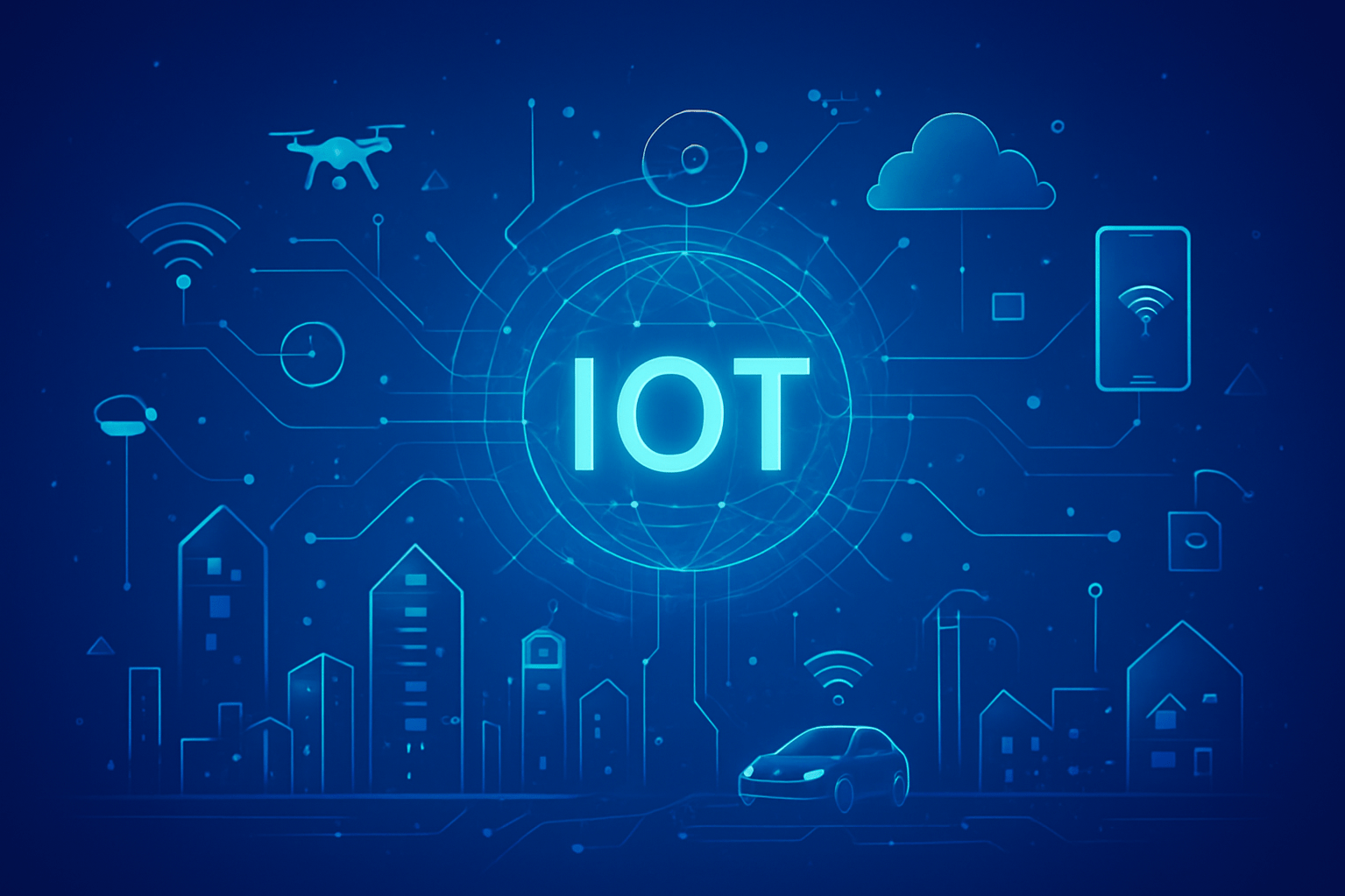20 November 2025
IoT Boom in 2025: How Telecom Operators Are Preparing for a Hyper-Connected Era
The rapid advancement of digital technology in recent years has significantly reshaped how people work, learn, and interact. One of the most influential technologies driving this transformation is the Internet of Things (IoT). As we move through 2025, IoT adoption is accelerating across homes, industries, transportation systems, and the public sector—powered by the increasing availability of smart devices and automated systems. This surge presents both tremendous opportunities and complex challenges for telecom operators. Telcos are no longer operating solely as connectivity providers; they are evolving into key enablers of a growing and increasingly interconnected digital ecosystem.
1. IoT as a Catalyst for New Connectivity Demands
IoT connects physical devices to the internet to collect, transmit, and analyze data in real time. From industrial sensors and smart meters to security cameras and health monitoring devices, each relies on reliable and efficient connectivity. In 2025, the number of IoT devices is projected to grow exponentially, driven by the rise of sensor-based digital services and automation across multiple sectors.
This growth demands that telecom operators deliver networks with characteristics that differ from traditional mobile broadband. While mobile users prioritize speed, IoT networks must offer energy efficiency, massive device capacity, and low latency. These requirements are pushing operators to modernize their infrastructure and adopt new approaches to network management.
2. The Role of 5G and LPWA in a Hyper-Connected Ecosystem
To support the surge of IoT devices, telecom operators are relying heavily on two foundational technologies: 5G and Low-Power Wide-Area (LPWA) networks such as NB-IoT and LTE-M.
5G provides ultra-low latency, network slicing capabilities, and support for massive machine-type communications (mMTC). This enables thousands of industrial sensors, robots, and autonomous systems to communicate efficiently and reliably. For manufacturing and industrial operations, 5G drives smart production lines, predictive maintenance, and large-scale automation.
Meanwhile, LPWA networks support low-power devices that require long battery life, such as smart meters, environmental sensors, and asset-tracking devices. These technologies are essential for public sector initiatives and enterprises managing large, distributed assets.
By combining 5G and LPWA, operators can meet diverse IoT requirements with greater flexibility and efficiency.
3. Challenges Faced by Telecom Operators Amid IoT Growth
While IoT presents significant business opportunities, operators must also confront several technical and operational challenges. One of the most pressing is the need for substantial investment in network modernization. To manage massive IoT traffic, operators must adopt cloud-native core architectures and expand edge computing capabilities to process data closer to users.
Interoperability is another key concern. The IoT ecosystem involves countless device vendors, connectivity standards, and application platforms. Without unified integration standards, operators face increasing complexity in service management.
Security threats are also escalating. The proliferation of connected devices expands the attack surface and exposes networks to potential vulnerabilities. Strengthening end-to-end security, ensuring device integrity, and managing identity and access become critical priorities.
Beyond technical issues, operators must also rethink their business models. Connectivity alone is no longer sufficient as the primary revenue source. The true economic value of IoT lies in digital services and data analytics. To remain competitive, operators must expand beyond connectivity and deliver end-to-end vertical solutions.
4. Strategic Transformation: Preparing for the IoT Era
To thrive in a hyper-connected landscape, telecom operators are adopting a series of strategic and technological transformations. Four key approaches are emerging across the industry:
a. Network Modernization Through Cloud and Edge
Operators are accelerating the shift toward cloud-native core networks and investing in edge computing to reduce latency, increase capacity, and tailor network performance through network slicing.
b. Building Integrated IoT Platforms
Beyond connectivity, operators are developing comprehensive IoT platforms that support device management, analytics, and API-based integration to simplify service deployment for enterprise customers.
c. Strengthening Ecosystem Collaboration
IoT innovation requires collaboration between telecom operators, device manufacturers, system integrators, and software developers. Many operators are forming strategic partnerships to expand capability and improve time-to-market for new solutions.
d. Enhancing IoT-Focused Cybersecurity
Operators are extending their security capabilities to include device-level protection, network-level threat monitoring, and application-level safeguards. AI-driven threat detection is becoming a vital tool for identifying anomalies and mitigating risks.
5. Vertical Sectors Driving IoT Demand
The growth of IoT is not uniform across industries—it is concentrated in key vertical sectors that are expected to generate significant demand for telecom services. These include manufacturing, logistics, smart agriculture, transportation, utilities, and public-sector smart city initiatives.
In manufacturing, IoT provides real-time monitoring and helps reduce downtime through predictive maintenance. In logistics, real-time tracking increases operational efficiency and supply chain visibility. Smart cities are leveraging IoT for intelligent street lighting, traffic management, and public safety systems.
With their nationwide coverage and infrastructure capabilities, telecom operators are well-positioned to create new, sustainable revenue streams by offering tailored IoT solutions for these verticals.
The year 2025 marks an important milestone in global IoT development. The rapid expansion of connected devices and intelligent systems is ushering in a future that relies heavily on robust, secure, and adaptable connectivity. For telecom operators, this represents an opportunity to step beyond traditional roles and become strategic partners in digital transformation initiatives across industries.
By modernizing networks, developing integrated IoT platforms, fostering ecosystem collaboration, and strengthening cybersecurity, operators can effectively capture the immense potential of the hyper-connected era. IoT is not merely a technological trend it is the foundation of the digital future and a key driver of innovation for years to come
Is this information helpful?
